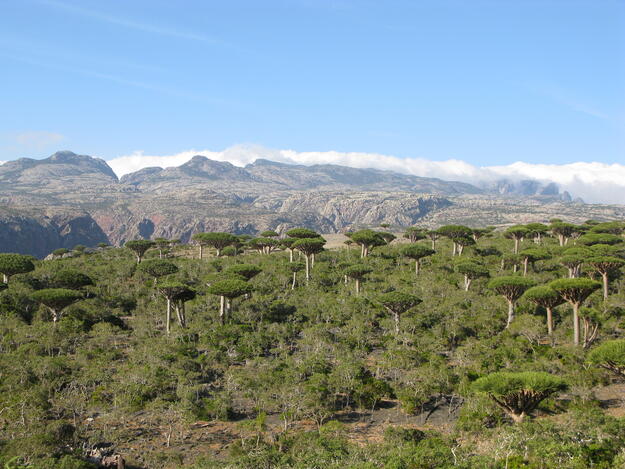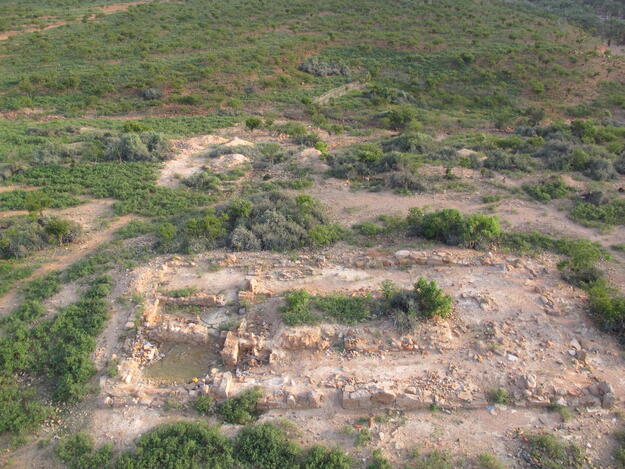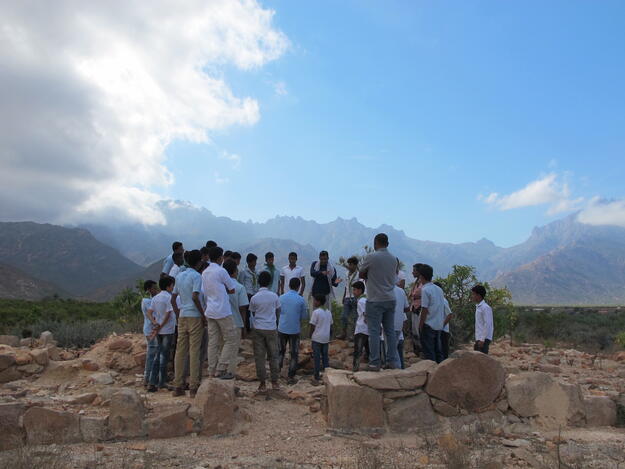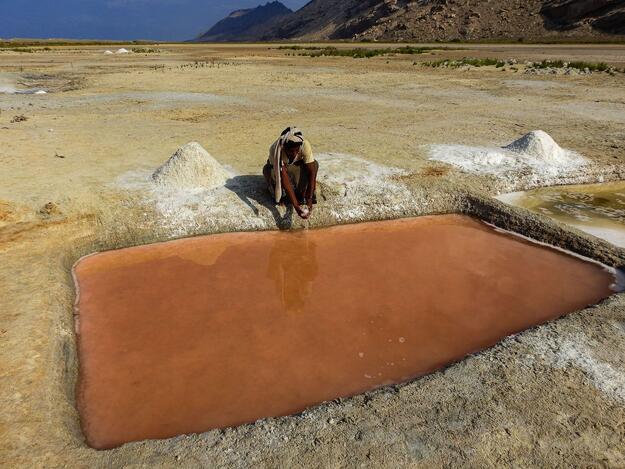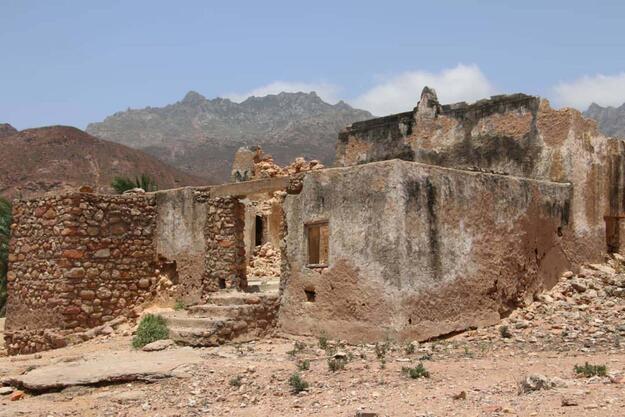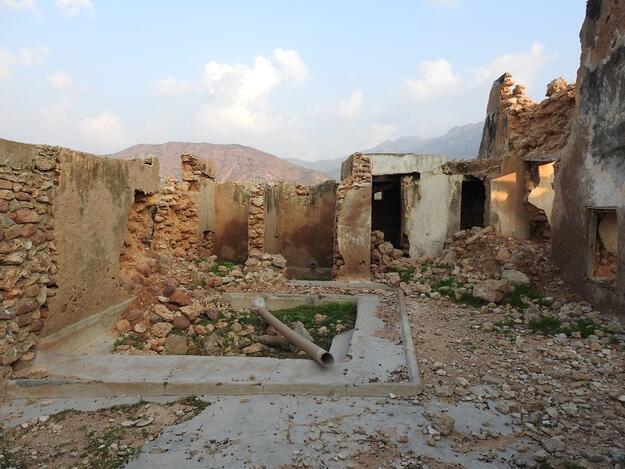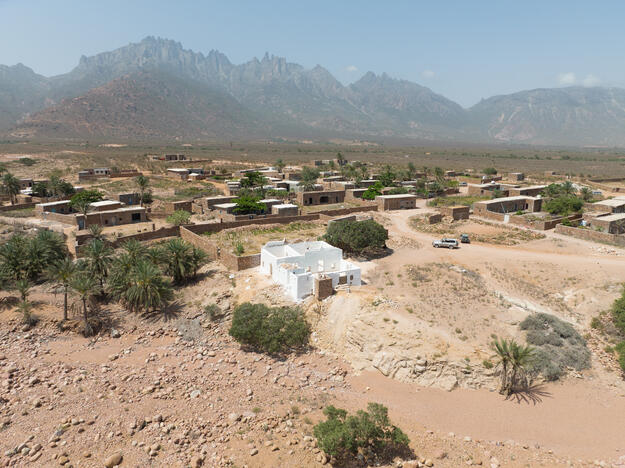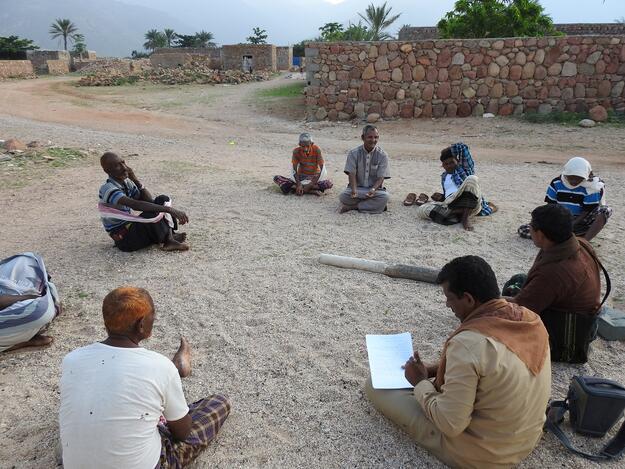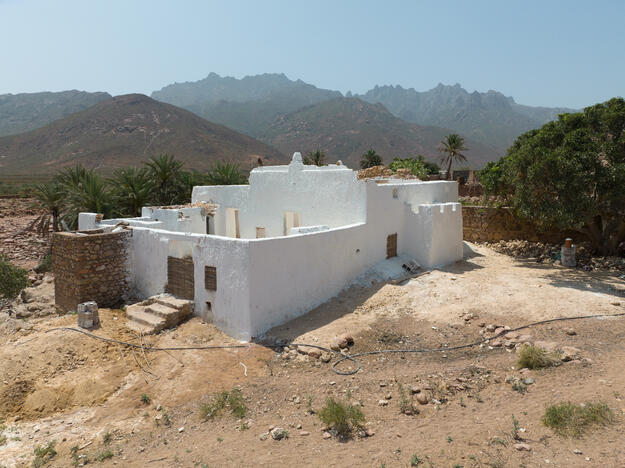Soqotra Archipelago
Site History and Significance
An Island of Unique Biodiversity
The largest island in the Arabian Sea, Soqotra is known for striking landscapes, from sandy beaches to limestone caves, jagged mountain peaks, and forests of iconic dragon blood trees. Soqotra’s geographic isolation has given rise to a unique biodiversity, with hundreds of plant species found only on the island.
The island’s flora has attracted scientific interest for more than a century, including a longstanding connection to Edinburgh’s Royal Botanic Garden. This interest intensified after Soqotra opened up to the outside world following the unification of North and South Yemen in 1990, and after construction of an airport in 1999 enabled year-round visitation. To safeguard Soqotra’s natural environment, the introduction of strong environmental protections paved the way for its inscription on the UNESCO World Heritage List in 2008.
Soqotri Culture and Living Heritage
The global regard for Soqotra’s biodiversity has often resulted in overlooking the unique cultural heritage and living traditions of the Soqotri people. For millennia the Soqotra archipelago has featured prominently within the Indian Ocean maritime trading network acting as an important hub for trade between the Red Sea, East Africa, and the Indian subcontinent, attracting traders from throughout the Indian Ocean world to its shores. In antiquity, Soqotra was famed for its frankincense, aloe, and the crimson sap of the dragon blood tree that was used for medicinal and aesthetic purposes.
The cultivation and extraction of these rich natural resources continue to represent key elements of Soqotri culture and traditional knowledge today. Alongside a distinctive living culture based on the endangered Soqotri language, music, and poetry, Soqotra preserves a rich, millennia-long heritage of rock art sites, traditional agricultural wall systems, defensive fortifications, settlements, churches, mosques, and cemeteries.
The Threat of Climate Change
Today, the world’s changing climate is threatening biodiversity, built heritage, cultural traditions, and local livelihoods on the Soqotra archipelago. This rich living heritage deserves recognition and protection. As global climate change intensifies, devastating cyclones are increasing in frequency. Extreme weather events in 2015 and 2018 took a destructive toll on Soqotra’s built heritage, including the nineteenth-century mosque of ‘Alha, which has since become the object of emergency interventions led by World Monuments Fund (WMF). Meanwhile, the Soqotra Heritage Project, a partnership between Soqotri heritage experts and international advisors and led by the Royal Botanic Garden Edinburgh, has begun the crucial task of documenting heritage places and traditions across the island as well as raising awareness of threats and potential conservation action.
2022 World Monuments Watch
The 2022 World Monuments Watch seeks to support collective efforts to promote recognition of Soqotri living traditions and traditional knowledge, as well as the long-term preservation of all of Soqotra’s heritage in all its forms.
![]()
The emergency stabilization of ‘Alha Mosque: A case study for conservation in the archipelago
‘Alha Mosque, built sometime in the 19th century under Sultan Hammad Bin Abdullah, was first mentioned by Lieutenant J.R. Wellsted who travelled to Soqotra in the 1830s. It was a small structure with an accessible courtyard, a prayer hall, and ancillary rooms for ritual washing. It is an historic example of the traditional architecture of Soqotra, built from cut stone and coral with lime/earth mortars and lime plasters.
The mosque and the nearby diwan were maintained annually by the Sultan’s wife with the application of lime mortar using local materials and expertise. This upkeep ceased upon her death. The mosque was in use until its destruction due to strong cyclonic events in 2015 and again in 2019 that destroyed the vault covering the prayer hall and exacerbated the erosion of some of the walls. The mosque is recognized locally as an historic monument and, as such, there is a strong desire among the local community to save the structure and retain its character.
World Monuments Funds initiated an emergency stabilization project for the mosque using funds from its Crisis Response program and ALIPH foundation. The stabilization project commenced with activities of full structural assessment and architectural documentation. Emergency works were completed and concluded in spring 2022, after the consolidation of the walls using the original stone blocks and plastering with the traditional local lime.Thus, concluding the first phase of the project, the next and last phase will be the reconstruction of the roof and minaret as well as the documentation and reinstatement of the original water system.
Learn More
Through the World Monuments Watch, WMF collaborates with local partners to design and implement targeted conservation programs—including advocacy, planning, education, and physical interventions in the historic built environment—to improve human well-being through cultural heritage preservation.
Sign up for our newsletter to receive regular updates on our projects, stories from the field, upcoming events, and more!
![]()
World Monuments Fund's work at the Old Mosque of 'Alha in Soqotra has been made possible, in part, by support from ALIPH.

